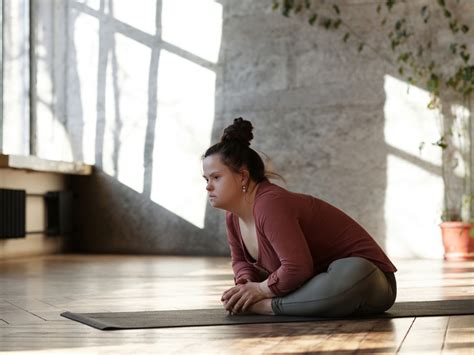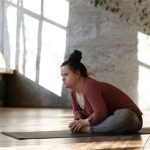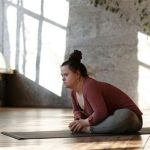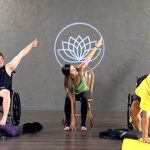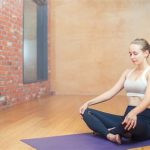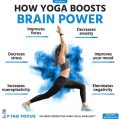Comfortable and Effective Yoga Adaptations for People with Disabilities: A Complete Guide
Yoga has long been celebrated for its holistic benefits, both physical and mental. However, for people with disabilities, traditional yoga practices may present unique challenges. Fortunately, adapting yoga to fit individual needs allows everyone to experience its transformative power. This guide explores how to adapt yoga for people with disabilities, offering practical applications, ethical considerations, and real-world examples to ensure comfort and effectiveness.
Introduction
Yoga is a practice rooted in flexibility, balance, and mindfulness. For people with disabilities, participating in yoga can promote both physical and emotional well-being, but it requires thoughtful adjustments to ensure accessibility and safety. While the yoga community has increasingly embraced inclusivity, many people still lack the resources or knowledge to effectively modify poses for various disabilities. This article provides a step-by-step approach to adapting yoga for different physical and cognitive abilities, ensuring that everyone, regardless of their limitations, can engage in this ancient practice comfortably and effectively.
Key Concepts
- Adaptation: The process of altering yoga poses and sequences to accommodate individual physical or cognitive limitations.
- Accessibility: Ensuring that yoga practices are available and achievable for people with diverse abilities, including those with mobility impairments, visual or hearing impairments, and cognitive disabilities.
- Chair Yoga: A widely used form of yoga that involves sitting in or using a chair to perform poses, making the practice more accessible for people with limited mobility.
- Props and Modifications: The use of tools like blocks, straps, or blankets to support poses, ensuring stability, and providing comfort.
- Inclusive Language: Offering cues and instructions that empower participants, avoiding ableist terms, and promoting body positivity.
Historical Context
The origins of yoga date back thousands of years, but it has only recently been recognized for its adaptability to people with disabilities. Historically, yoga’s rigid focus on physical perfection alienated those with non-typical bodies. However, as modern yoga evolved, instructors like Matthew Sanford and organizations like Accessible Yoga have worked to make yoga a more inclusive practice, advocating for individuals with various physical, mental, and emotional challenges.
Current State Analysis
As yoga’s popularity has surged, so has the demand for accessible classes. Many yoga studios now offer adaptive yoga sessions, though there is still a shortage of teachers who are adequately trained in disability-inclusive instruction. Additionally, accessible yoga classes tend to be geographically concentrated in urban areas, making it difficult for people in rural regions to find appropriate resources. Online platforms have started to fill this gap, but they too are limited by the lack of specialized instruction in disability-centered modifications.
Practical Applications
Adapting yoga to meet the needs of people with disabilities requires more than a simple change in poses. Below are key strategies for practitioners and teachers:
- Use Props: Yoga blocks, straps, bolsters, and chairs can make a huge difference. For instance, a block under the hands in a forward fold can reduce the distance the body has to move.
- Chair Yoga: This form of yoga allows people with mobility challenges to remain seated while performing many of the same poses. Modifying common poses like “Warrior II” or “Mountain Pose” for a seated position makes them more accessible without sacrificing their benefits.
- Breath Awareness: Encouraging students to focus on breathing can reduce anxiety and promote relaxation, regardless of physical ability.
- Gentle Adjustments: Instead of pushing someone into a pose, gently offering options that prioritize comfort and ability is critical. Using verbal cues to adjust postures ensures personal space and autonomy.
- Mindful Sequencing: Practitioners should consider limitations when designing a class flow. For example, those with joint issues may benefit from a slower pace with longer rests between transitions.
Case Studies
| Disability | Challenge in Yoga | Adaptation Example |
|---|---|---|
| Paraplegia | Inability to use legs in standing poses | Chair yoga sequences; arm-supported poses like seated twists |
| Arthritis | Pain in joints, limited range of motion | Props such as yoga blocks and straps to reduce strain on joints |
| Cerebral Palsy | Difficulty with balance and coordination | Use of bolsters and walls for stability in poses like “Triangle” or “Tree” |
| Amputation | Missing limb alters body mechanics in poses | Customized support using chairs or props to achieve balance |
| Visual Impairment | Inability to follow visual cues from instructor | Clear, descriptive verbal instructions and guided physical adjustments |
| Hearing Impairment | Difficulty hearing instructions during a fast-paced class | Use of visual demonstrations and hand signals for communication |
| Down Syndrome | Reduced muscle tone and balance challenges | Poses that emphasize core strength and stability, with gentle encouragement |
Stakeholder Analysis
Several stakeholders play important roles in making yoga more accessible to people with disabilities:
- Yoga Instructors: The primary facilitators, responsible for modifying classes and offering adaptations. They need proper training to cater to all abilities.
- Healthcare Providers: Physicians and physical therapists can help determine which yoga practices are safe for individuals with specific conditions, and they can recommend modifications.
- Disability Advocates: These individuals or organizations work to ensure that people with disabilities have equal access to wellness resources, including yoga.
- Yoga Studios and Gyms: Responsible for creating inclusive spaces and offering accessible classes.
- Online Platforms: With increasing demand for digital yoga, online platforms play a vital role in offering accessible content to people who may not be able to attend in-person classes.
Implementation Guidelines
Successfully adapting yoga for disabilities requires a comprehensive approach:
- Teacher Training: Instructors should undergo specialized training in adaptive yoga, including sensitivity to disabilities and expertise in using props effectively.
- Collaboration with Medical Professionals: Consulting healthcare professionals ensures that practices are safe for individuals with specific conditions.
- Accessible Studio Design: Studios should be equipped with ramps, wide entryways, and accessible restrooms to accommodate participants with mobility challenges.
- Continuous Feedback: Participants should be encouraged to provide feedback on the accessibility of classes, allowing instructors to make improvements over time.
Ethical Considerations
Ethical considerations are central to adapting yoga for disabilities:
- Informed Consent: Participants must fully understand the risks and benefits of practicing yoga, particularly when adapted for their unique needs.
- Autonomy: It’s important to respect participants’ autonomy, offering adaptations but never pushing them beyond their comfort levels.
- Non-Discrimination: Classes must be designed to be inclusive and free from discrimination, ensuring that all participants feel welcome and respected.
- Privacy and Dignity: Adaptive yoga teachers should ensure that modifications are offered discreetly, preserving the dignity of the participants.
Limitations and Future Research
Despite significant progress in making yoga more accessible, there are still limitations to be addressed:
- Limited Research: More studies are needed to explore the long-term benefits of adaptive yoga for various disabilities, as well as its psychological effects.
- Lack of Universal Standards: Currently, there are no universal guidelines for teaching adaptive yoga, leading to inconsistency in the quality of instruction.
- Access to Resources: Many adaptive yoga classes are concentrated in metropolitan areas, making it difficult for people in rural communities to find accessible options.
- Technology Barriers: While online platforms are expanding, they may not be fully accessible to all, particularly those with visual or hearing impairments.
Expert Commentary
Experts in the field of adaptive yoga emphasize the need for continued innovation and inclusivity in the practice. According to Matthew Sanford, a pioneer in adaptive yoga, “Yoga isn’t about perfect postures; it’s about how we engage with our bodies and minds, no matter our physical limitations.” Other leading voices stress the importance of community-based approaches, where people with disabilities are directly involved in designing and implementing accessible yoga programs. The future of yoga, many agree, will be marked by an ongoing commitment to inclusivity, ensuring that people of all abilities can experience the transformative benefits of the practice.
